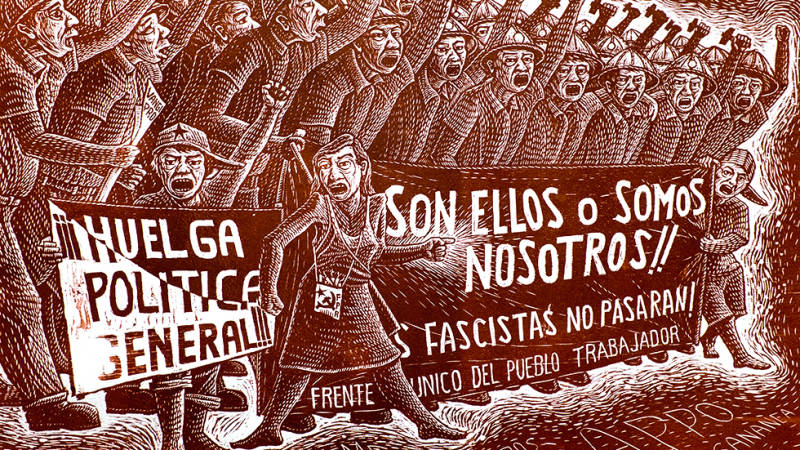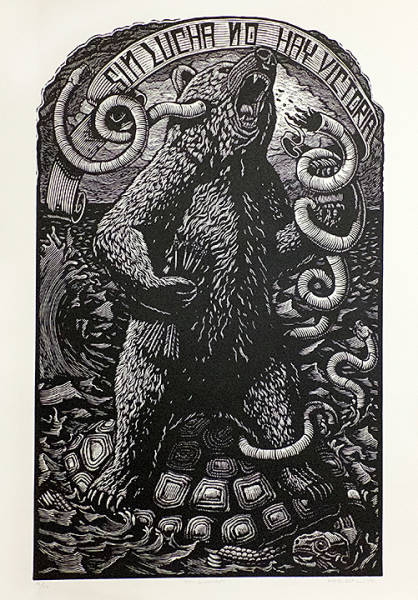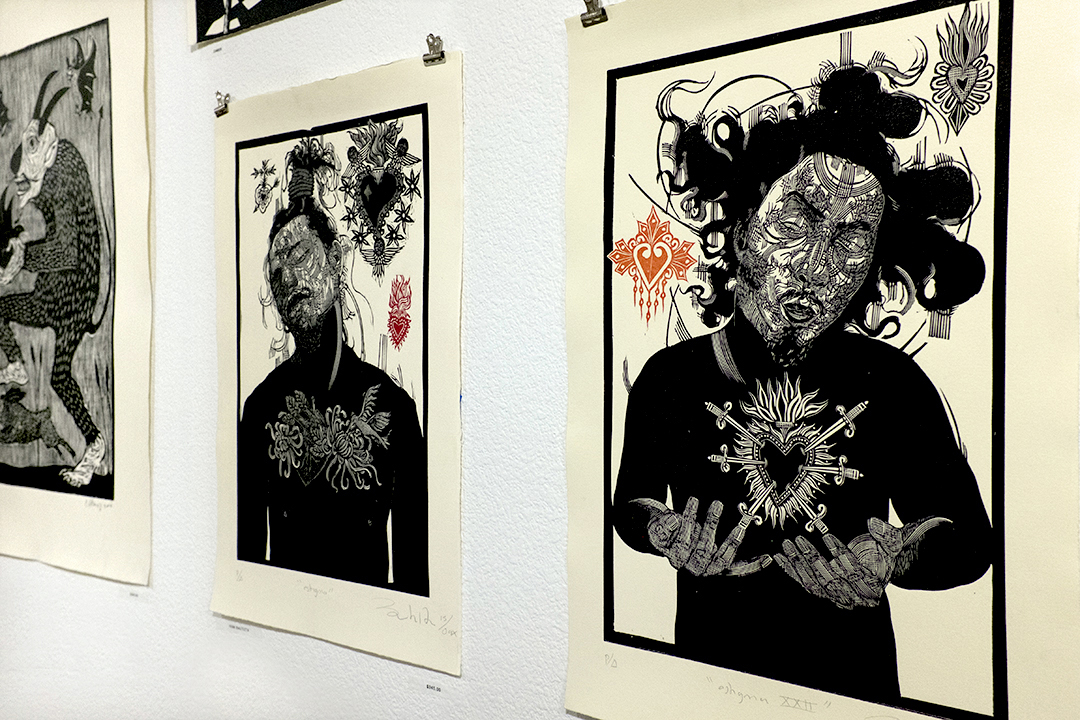Yescka’s call to action as an artist truly began in 2006 during the Oaxaca teachers’ strike, when a tear gas canister hit him in the chest at close range. Thinking he had been hit with a bullet, he realized the radio he was holding had shattered from the impact of the canister, probably saving his life.
It was during this now-historic period of rebellion (calling for better pay for teachers and the resignation of the state’s governor) that the Asamblea de Artistas Revolucionarios de Oaxaca (ASARO) collective was formed.
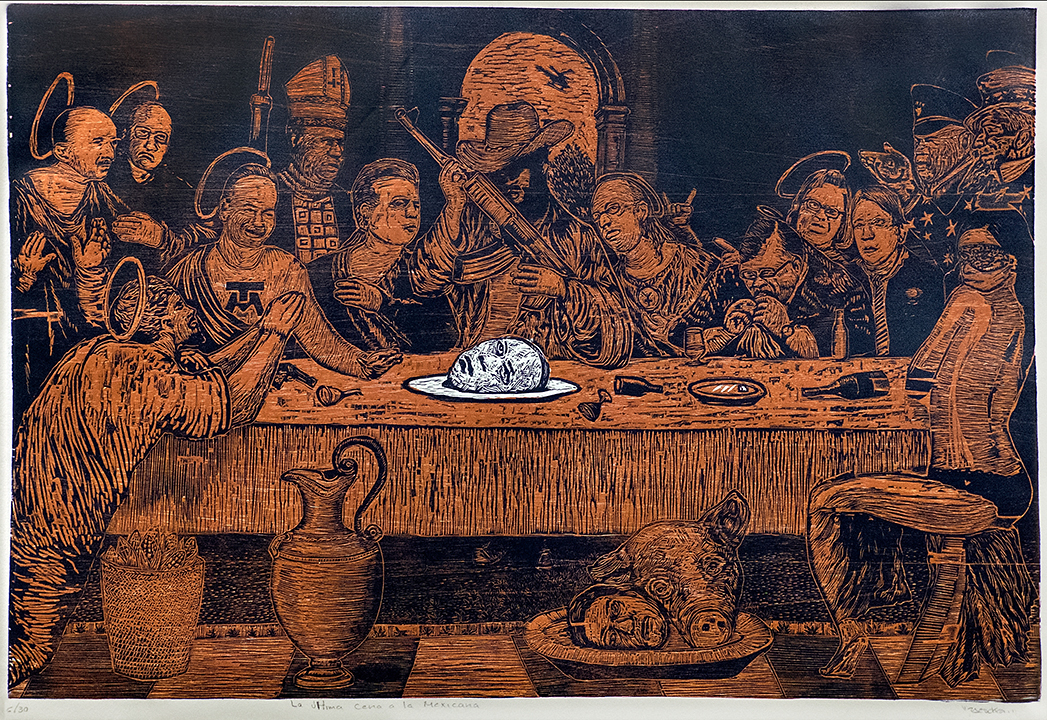
Made up of 35 artists — from students to street artists to those with established careers — the collective set out to contribute to the movement by creating social and political art that would make people more sensitive, raise consciousness and foster new spaces for artistic expression.
Ten years later, ASARO is still a working collective with a core group of 13 members. Many of the original members have gone on to live abroad, carrying with them the values of ASARO’s founding principles. For Yescka, political art remains a tool to express emotions and situations that affect the human sensitivity. “In this world,” he says, “I think some expressions are forgetting the human side, they are more pretentious and empty.”
The collective’s current exhibition at Curate Good in San Jose, MONARCA: La Metamorphosis is an excellent example of the power of conscientious art making. The works in the show call attention to and document pivotal moments of human suffering as well as our enduring resilience.
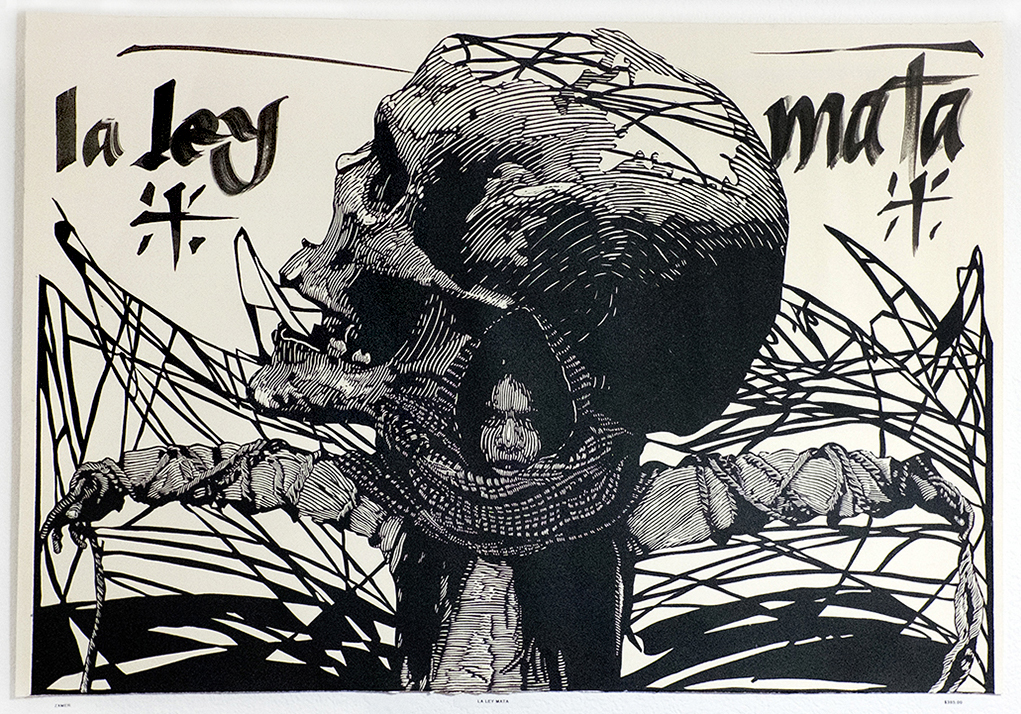
The exhibition came to San Jose thanks to the efforts of Sonido Clash, a San Jose music collective of DJs specializing in the “traditional and future sounds of Latino music.” Sonido Clash met many of the MONARCA artists last year at Oaxacalifornia, an art show at the Modern Times Bookstore in San Francisco.
